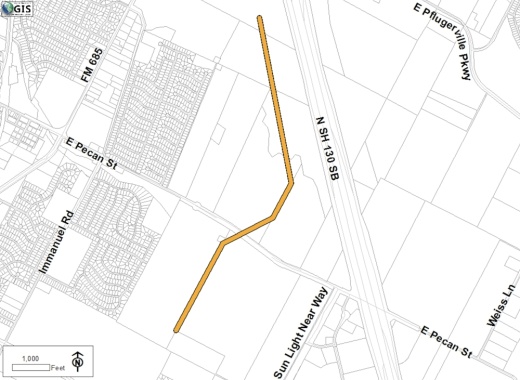Pflugerville City Council voted unanimously to rescind a nearly $13 million construction bid for Phase 1 of an upcoming SH 130 wastewater interceptor project at its Feb. 11 meeting. Further discussion on the bid withdrawal was provided in executive session prior to council's vote, with city staff only confirming there were inconsistencies with the bidding process.
ORIGINAL POST
Pflugerville City Council unanimously voted to award a nearly $13 million construction bid for Phase 1 of an upcoming SH 130 wastewater interceptor project at a Jan. 28 meeting. Council selected the bid presented by S. J. Louis Construction of Texas, Ltd.
The project, per city documents, would ultimately construct nearly 16,000 feet of a sanitary sewer pipeline, running along Wilbarger Creek to Gilleland Creek and extending from the FM 685 and Pflugerville Parkway intersection to the city's Central Wastewater Treatment Plant. Also included in the project are roughly 1,000 feet of sanitary sewer installed beneath SH 130 to the east side of SH 130, as well as the demolition of the Pflugerville Parkway Lift Station.
The approved bid is listed as $12.99 million, while the initial cost estimate for the project was approximated at $13.13 million, per city documents. The bid was the second lowest offer received by the city; the lowest was submitted by Excel Aircraft, LLC in the amount of $11.6 million.
According to a report submitted to city staff by DCS Engineering, LLC—the firm that reviewed the bids—Excel Aircraft, LLC was rated with a "moderate to high probability of severe delinquency" based, in part, on two of three negative performance reviews received from previous clients. S. J. Louis Construction of Texas, Ltd received a rating of a "low to moderate probability of severe delinquency," with two of three previous references provided by the contractor positively reviewing its service.
For the project, Darren Strozewski of DCS Engineering said safety is a "paramount concern," as the project will include, in part, workers 70 feet underground during the construction process.
“Anything we do here, we need it to last 100 years," Strozewski said.





